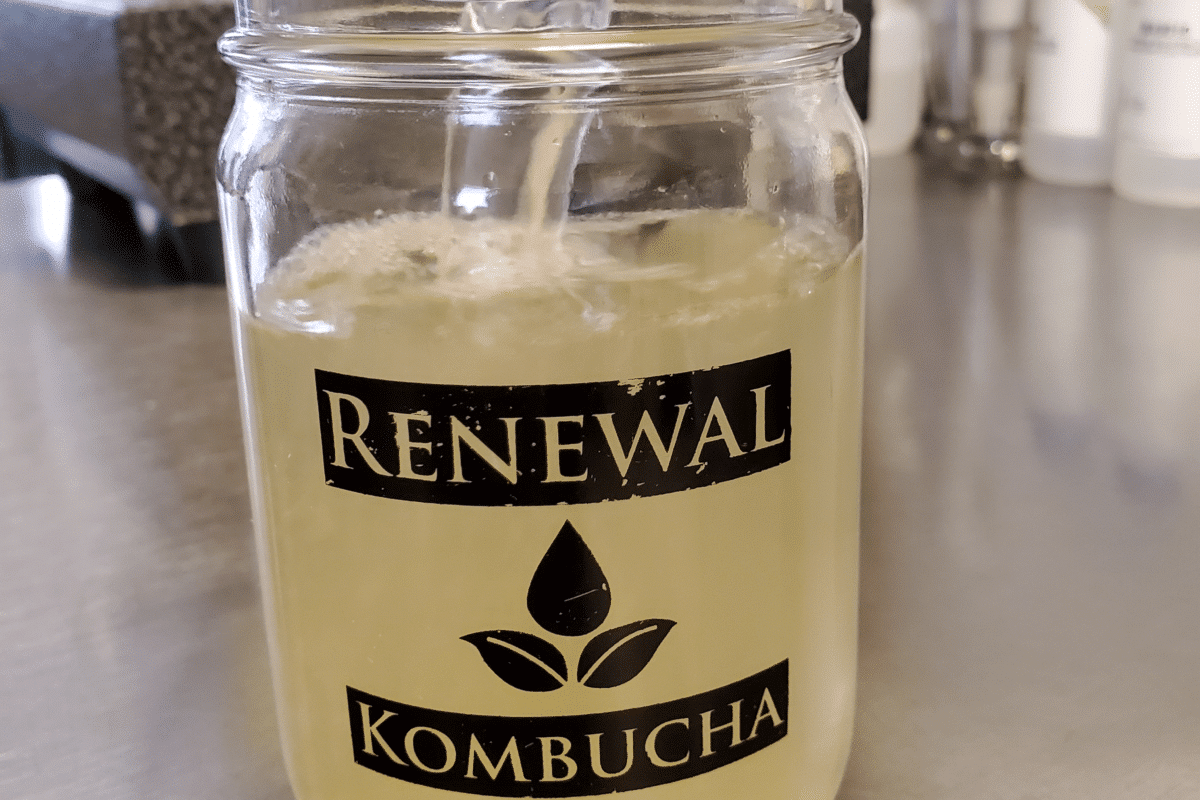Jeremy Sayer combines chemistry with unique combinations of carefully selected flavorful ingredients to create healthy fermented Kombucha at his creative taproom, RENEWAL KOMBUCHA in Lititz, Pennsylvania. Jeremy describes Kombucha as “a probiotic fermented tea, naturally live-cultured, and served cold and fizzy. All kombucha has four essential ingredients: water, sugar (to feed the yeast), SCOBY (symbiotic colony of bacteria & yeast), and some form of tea or herb that contains tannins (to feed the bacteria). Our kombucha flavors are all made with unique blends of organic teas, herbs, flowers and fruits, with organic evaporated cane juice used as the yeast food.”

Some of the flavors that Renewal makes use ingredients commonly found in kombuchas, such as green, white and black teas, ginger, peppermint, lemongrass, hibiscus, and various fruits. Among the various unusual ingredients Renewal has experimented with are raspberry leaf, sassafras, fennel, chili peppers, butterfly pea flower, and juniper berries. Jeremy sources ingredients from several organic wholesale suppliers. His popular small-batch brews use fresh, seasonal, local ingredients such as strawberries, peaches, and apples. Renewal will have four 5 gallon kegs of Nectarine-Hops Kombucha on tap late August, but the annual limited small batch is always quick to sell-out. This elusive kombucha is made with fresh nectarines from Weaver’s Orchard, in Morgantown PA, and wet hops from Holtwood Hops, in Southern Lancaster County, both family-owned farms. Hops are used within a day of being hand-picked, and this Kombucha is as delicious as it is healthful. A similar flavor-infused kombucha can be made in home kitchens with the recipe below.

The probiotics in kombucha are basically bacteria that are beneficial to the body and can help to combat the effects of harmful microbes that work their way into our bodies in various ways. As a fermented, craft beverage, Kombucha is a non-alcoholic beverage making more appearances at bars and gatherings; good for the designated driver, dieter, or anyone looking for a refreshing, effervescent alternative to beer.

Kombuchas can vary from brewer to brewer using similar ingredients. Some are more tangy, floral, sweet, or savory than others. Kombucha can be made at home, and a plethora of information for DIY brews, much like sourdough, can be found on the internet. Kombucha making is a process that usually takes around 4-6 weeks from conception to serving of a new flavor. The stages blend into each other at times, but Brewing, Growth, Maturity, Kegging all are necessary steps. Years ago, Jeremy grew his first kombucha culture from a bottle of raw kombucha, and all of his cultures are still distantly related to that first mother culture!![]()